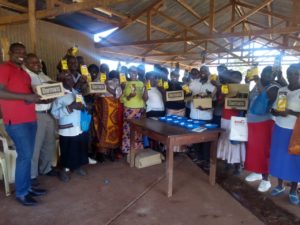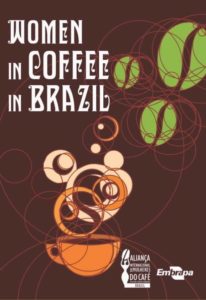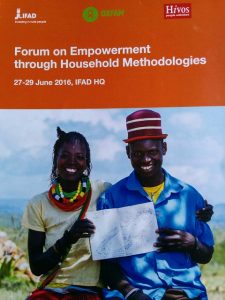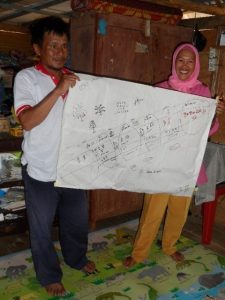Do you also find it difficult to have reliable Key Performance Indicators (KPIs) in your programmes, especially in relation to measuring change in gender? Below I describe some major domains and indicators, as used in the Women’s Empowerment in Agriculture Index (WEAI), the W+ standard and by The Donor Committee on Enterprise Development (DCED) . I zoom in on one participatory approach, which combines qualitative with quantitative data collection for both women ánd men, which provides reliable data, is cost effective and empowering.
WEAI
Many different indicators have been developed, and small or large-scale surveys done, costing a lot of money. For example the Women’s Empowerment in Agriculture Index (WEAI). This index compared women’s empowerment in agriculture in different countries, using five domains:
- production
- resources
- income
- leadership
- time
(AgriPro-Focus, Gender in value Chains 2012:122-126) It was a large scale quantitative comparison between different countries. This is not easily repeated in the context of programmes or projects, even if made more qualitative. A major problem may be the reliability of the answers, as farmers may not easily answer strangers on these types of questions.
The W+ Standard
The W+ standard is an unique certification label developed by Women Organising for Change in Agriculture and Natural Resources (WOCAN) that endorses projects that create increased social and economic benefits for women in participating in economic development projects. W+ measures women’s empowerment in six domains:
- time
- income and assets
- health
- leadership
- education and knowledge
- food security
It produces quantified women-benefit units that contribute towards post-2015 Sustainability Goals (SDGs), Climate Financing, or Corporate Social Responsibility (CSR) targets. (Coffee Toolkit 2014: 179-185)Even though companies may want to work towards these, it may be an additional burden on top of already heavy standard requirements. It deals with women only, therefore not measuring possible empowerment of men.
DCED
The Donor Committee on Enterprise Development (DCED) developed a Women’s Economic Empowerment (WEE) framework. It recommends to formulate indicators related to your objectives. Select your indicators in accordance with your approach to inclusiveness. Different outcomes will be formulated for initiatives in which women and youth is mainstreamed versus the ones that target women and youth. The recommend to use a mix of access to resources and agency indicators.
Access to resources can be measured with indicators as commonly used in Private sector Development Programmes:
- increase in income
- skill development and access to resources
- employment opportunities
The most important to do this is a sex disaggregated manner.
Agency refers to indicators around:
- time use
- decision-making abilities
- physical mobility
DCED recommends to use both qualitative and quantitative data collection. Some general insights on the effectiveness of M&E:
- Make M&E a learning partnership, not a performance test
- Approaches that include multiple M&E frameworks/tools/methods are more effective that frameworks that use just one approach
- Balance quantitative and qualitative assessment techniques
- Legitimize and value participatory approaches
- Make M&E systems flexible and adaptable
- Also track and assess negative changes, resistance and reversals as a result of actions
- Approaches that assess contribution to change (like theories of change) work better than attribution based frameworks (like logframes)
- Tailor indicators and results to time frames to make them more realistic, it is better to under-promise and over-deliver than the other way around.
- Invest in baselines (AWID in Coffee Toolkit 2014: 211-2).
Comparing the three approaches
From the three major players using gender domains and indicators, many are overlapping. To be precise:
- time , income and resources (assets) is used by all three
- education, skill development and knowledge is used by two
- production, decision making, physical mobility, food security, and employment opportunities is used one by at least one.
The WEAI and the DCED are collected through large very costly, quantitative surveys, which often have problems of reliability. The W+ standard was developed in a participatory manner, but deals with women only, and has heavy standard requirements, which are also costly. Another example, which combines the advantages of the first three methodologies, integrating most of the domains and indicators used, can be found in the GALS. This is a participatory approach for both women ánd men, linking bottom-up qualitative tools which can be quantified, collecting reliable information, is not expensive, and is also empowering for those in which the changes occur. Lastly, it is linked to the CEDAW (Convention on the Elimination of All Forms of Discrimination Against Women) principles.
Gender Action Learning System
One example of a participatory approach is the Gender Action Learning System, which has several qualitative tools, which can be quantified for large groups of people.
The best example is Bukonzo Joint Cooperative Union, a farmers cooperative union in West Uganda, of more than 5000 members, which collects data this way.
It starts with the individual farmer, male or female, who tracks his or her own changes in note books, using green fruits (green circles) around pictures for planned change, and red fruits (red circles) around pictures of achieved change.
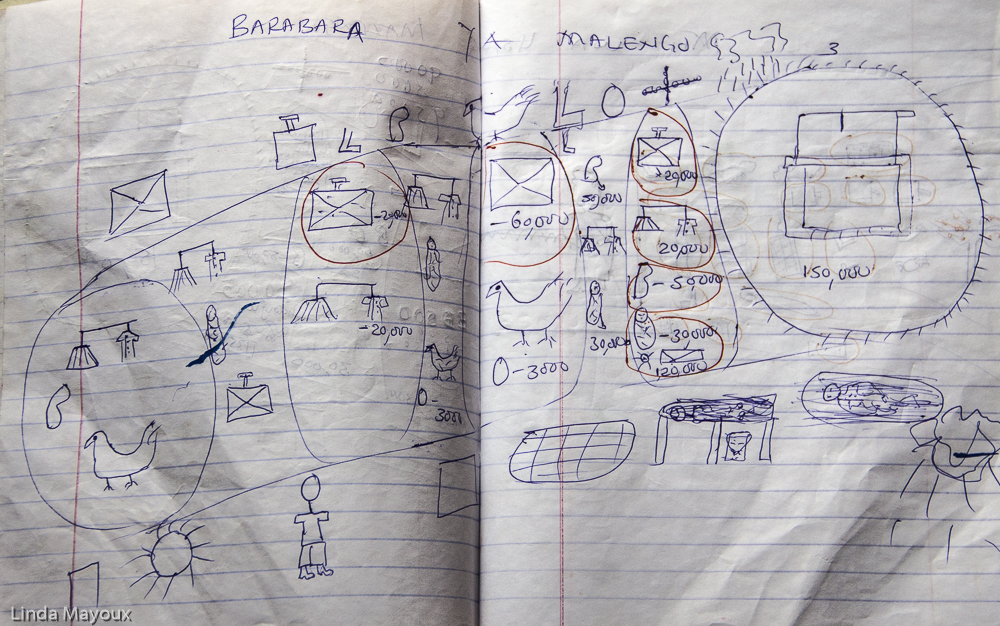
A tool for quantifying changes is the achievement journey. These changes are then quantified in group meetings. One person calls their achieved change, then it is quantified how many women and men have achieved the same change. Change for women and men are colour coded differently. Then another person gives his or her achieved change, and again it is quantified how many women and men have achieved the same change. These quantified changes of different groups are then combined, either in a drawing or in excell sheets, or both.
Vuasu Coopeartive Union in Tanzania did a similar exercise for 1500 people.

This can then later be placed in “domains”, such as mentioned above. GALS uses the Convention on the Elimination of All Forms of Discrimination Against Women (CEDAW) principles as basis, this would then be:
Right 1: freedom from violence
Right 2: equality of property ownership
Right 3: equality of decision-making
Right 4: equality of work and leisure
Right 5: freedom of thought and association
Ad 1. Reduced domestic violence
Ad 2: Shared resources, such as joint land
Ad 3: Shared planning and decision-making
Ad 4: Time (shared reproductive and productive activities) Increase in income (and savings), Increase in Employment
Ad 5: Women are member of producer organisation, and are members of the board
Conclusion
Once integrated into operations, GALS M&E does not cost any additional money, is much more reliable than many of the methods mentioned above, ánd is empowering for both female ánd male farmers themselves.
Call for action
GALS uses different tools in its M&E.
For more information see Gender Action Mainsteaming for Change Network
Interested to learn more? Please contact:
Error: Contact form not found.
